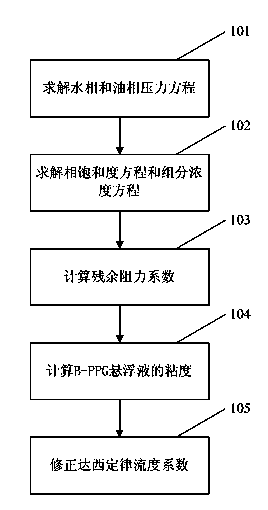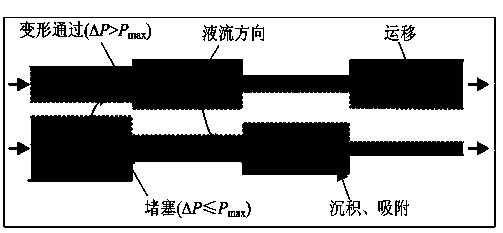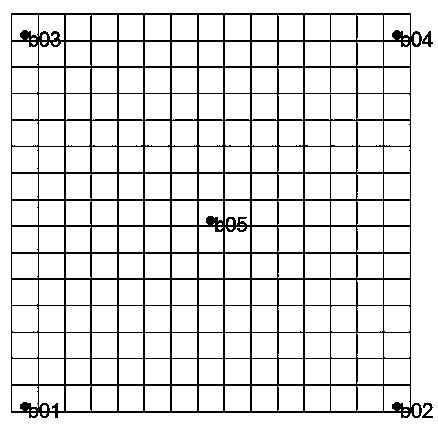Numerical simulation method for heterogeneous oil combination flooding system
A composite flooding and numerical simulation technology, applied in the fields of electrical digital data processing, special data processing applications, instruments, etc., can solve problems such as numerical simulation methods of discontinuous migration regulation and displacement mechanism that have not yet been found.
- Summary
- Abstract
- Description
- Claims
- Application Information
AI Technical Summary
Problems solved by technology
Method used
Image
Examples
Embodiment Construction
[0020] In order to make the above and other objects, features and advantages of the present invention more comprehensible, preferred embodiments are listed below and described in detail in conjunction with the accompanying drawings.
[0021] Such as figure 2 as shown, figure 2 It is a schematic diagram of the migration and plugging mechanism of pre-crosslinked gel particles through pore throats. Among them, △P represents the pressure gradient of the seepage field, and Pmax represents the pressure gradient of particle deformation and migration, which can be measured by indoor seepage experiments. When △P≤Pmax, the pressure gradient of the seepage field is not enough to cause the particles to migrate. At this time, the particles stay in the pores in the form of blockage, deposition, adsorption, etc., and the displacement liquid turns to flow into other pores; when △ When P>Pmax, the pressure gradient of the seepage field reaches the critical value of particle migration, and ...
PUM
 Login to View More
Login to View More Abstract
Description
Claims
Application Information
 Login to View More
Login to View More - R&D
- Intellectual Property
- Life Sciences
- Materials
- Tech Scout
- Unparalleled Data Quality
- Higher Quality Content
- 60% Fewer Hallucinations
Browse by: Latest US Patents, China's latest patents, Technical Efficacy Thesaurus, Application Domain, Technology Topic, Popular Technical Reports.
© 2025 PatSnap. All rights reserved.Legal|Privacy policy|Modern Slavery Act Transparency Statement|Sitemap|About US| Contact US: help@patsnap.com



